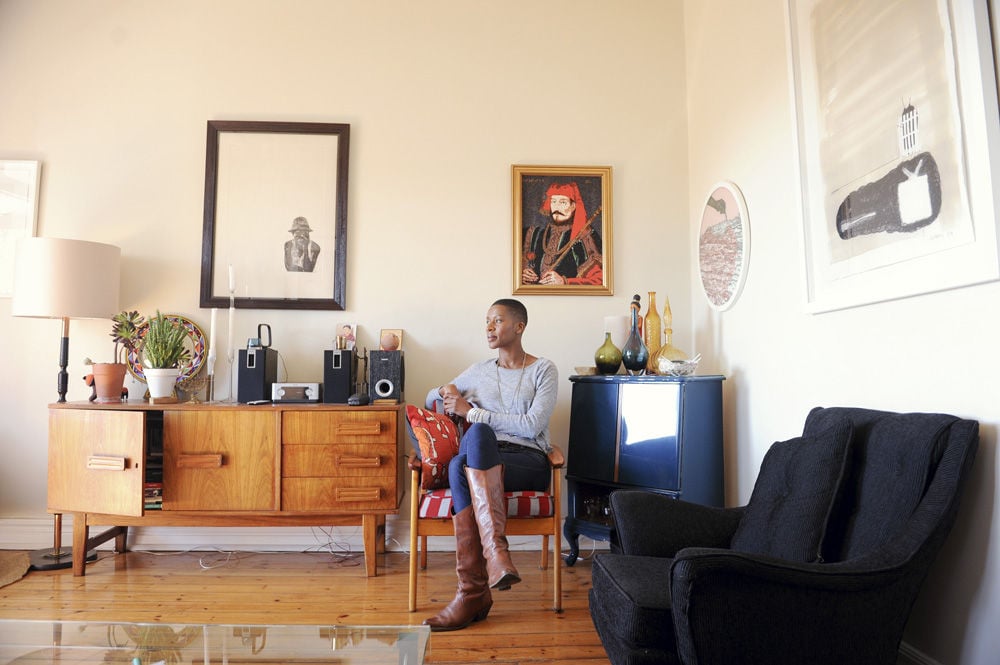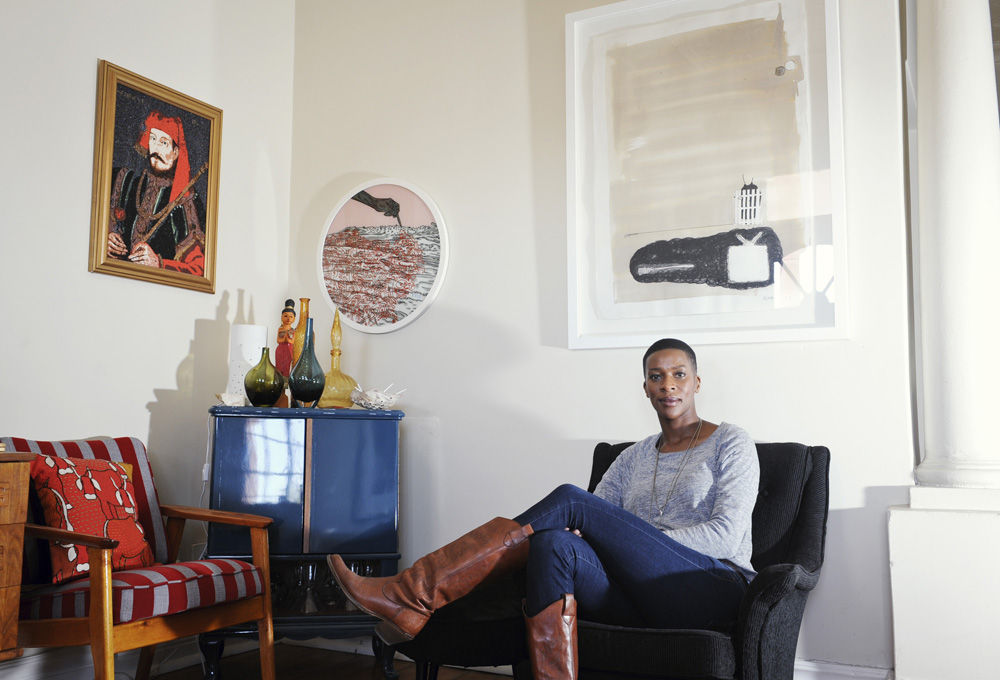It’s not new for artists to abandon a medium they’ve been known, and sometimes celebrated, for. Before becoming famous as a painter, spray paint was the medium of choice for Jean-Michel Basquiat, who tagged “Samo” on the run-down streets of New York City. More recently, and in the same city, artist Kara Walker – known for her paper cut-outs exploring race and sexuality – stunned the art world when she revealed an over 10m-high sphinx sculpture made from a different material: bleached sugar.
But there’s something about change that is harder to grasp for those witnessing it than those creating it. When artist Nandipha Mntambo unveiled her latest body of work at Jo’burg’s Stevenson Gallery in April, the paintings hanging on display came as a surprise for those anticipating to see the cowhide sculptures she’s become renowned for.

But like the many artists who explore new mediums, the breakaway from the substance used to create art does not necessarily mean a breakaway from the train of thought used to create the artwork.
And, as in the case of Basquiat, Walker and Mntambo, the change of medium is merely an extension of their artistic repertoire. “Right now I’m interested in painting. I got to a place in my life where I was tired of being the cowhide chick,” Mntambo tells me frankly, before we speak about her personal art collection. We meet up on the cusp of summer and autumn. It’s a busy time for the artist. It’s a month ahead of her exhibition at Art Basel in Basel, Switzerland, two weeks before she leaves for Sweden’s Borås International Sculpture Biennale, and seven days until her Stevenson exhibition, Transcience, draws to a close.
“The language that I found in sculpture work is amazing, and it’s interesting to feel like I’ve mastered part of it. But I like to keep myself challenged and dip into different things,” the winner of the 2011 Standard Bank Young Artist Award for Visual Art says about painting. The body of work displayed at the gallery – rich in brush-stroke textures and earthy hues – might spell a new direction for the Swaziland-born artist, I imply. But Mntambo assures me that she isn’t deserting her thinking around the challenges and preconceptions of the female body, as told in her sculpture, photography and video work. “I’m not moving away from figurative work, but in understanding how to image the body – the humps and bumps keep coming up.”
Similarly to the mounds that haunt and give shape to her shadowy sculptures, these humps and bumps are literally visible in her paintings, on which dangles strands of horse-like gold mane. “Because I’m an artist who thinks three-dimensionally, I didn’t want the paintings to be two-dimension, so having the hair elements made sense.”
As we interrogate the parallels between her abstract paintings and figurative work – such as the bumps, organic materials and colours used – I share that one might think of her paintings as a translation to her earlier artwork. “Painting is a very complicated space,” she responds. “There are lots of things lost in translation but I’ve found a new language in painting.”
While expanding on this visual language across artistic techniques, Mntambo – who was under the tutelage of renowned artist and sculptor Jane Alexander while studying for her Master’s degree at the University of Cape Town’s Michaelis art school – shares how she began painting.
“While living in an Ohio residency I decided I had wanted to start painting and printmaking as part of my programme there. At the time I made a mistake of thinking that because my sculptural work is very figurative, I would make figurative paintings and prints.
“But the work I created, I felt, was really ugly so I scrapped that idea and began to think of the body in a more abstracted way.” With the help of Artist Press owner Mark Atwood, “we played around with different solvents and inks, and found a way of creating these very paintily [sic] etchings”.

(All photographs by Madelene Cronje, M&G)
So before we wrap up to go our separate ways, and Mntambo handles “the chaos of the admin of art fairs”, we chat about her fast-growing, four-year-old art collection.
When did you start collecting art?
About four years ago, I started my collection with a series of Zanele Muholi’s black and white photographs. After that, I bought a two-panel Serge [Alain Nitegeka] artwork, and I was also lucky enough to befriend Nelson Makamo – who I got a print from. I also got some work from Kemang wa Lehure, who was still studying at the time. So I got a lot of his early stuff.
How do you get your artwork?
Mostly from exhibitions; like Zanele and Serge’s work. But with Kemang wa Lehure – while he was still studying – I just went to his studio, and I was like: ‘Hey dude, please can I buy some of your work.’ (laughs). And Jane [Alexander] gave me a print, which I was really grateful for.
What about artwork by international artists?
I have piece by [Ivorian artist] Valerie Oka, when she was at the Nirox Foundation residency. And I have a Malick Sidibé piece. I was lucky enough to go to Mali, where I spent my birthday with the photographer.
What is your most prized piece?
Probably the print that Jane gave me.
Which young artists are you excited about?
(Laughs) I like old artists a lot; unfortunately they’re all dead. Louise Bourgeois is my favourite and Salvador Dalí. I also like sculptor Eduardo Villa. But contemporary artists like [Kenyan artist and painter] Wangechi Mutu are great. And in South Africa, I enjoy the art of photographers Hasan and Husain [Essop], and video work by Haroon Gunn Salie.
When acquiring art, what do you look for in pieces?
I collect work that inspires nostalgia, memories of the past – work that captures the moment in a way that inspires the viewer to look more deeply. I really enjoy work created by my contemporaries, but have been lucky to have both more established and young artists in my collection.
What was the last piece of art you added to your collection?
I got two prints by two young print makers working at Artist Proof Studio. One, by Leroye Malaton, is titled ATM and the other, Unconscious, is by Nkosana Nhlapo.
What piece are you hoping to add to your collection?
I would love to own Bourgeois’s Spider and a bronze Villa sculpture.
As we celebrate 20 years of democracy and with a spotlight on art activism, do you feel that there is tolerance and space for activist artists in the country (especially after the Brett Murray and Ayanda Mabulu sagas)?
South Africa is an interesting space where the freedom of expression is very important but equally remains a contested issue. I feel that the space for tolerance and activism within the arts is expanding, although also being met with resistance within some circles. Artists are creating work that challenges viewers in ways that make it difficult for their voices to be left unheard. This challenge encourages discussion and the confrontation of the issues that affect us as individuals and as society in general. This debate and discussion is sorely needed for the development of our country.